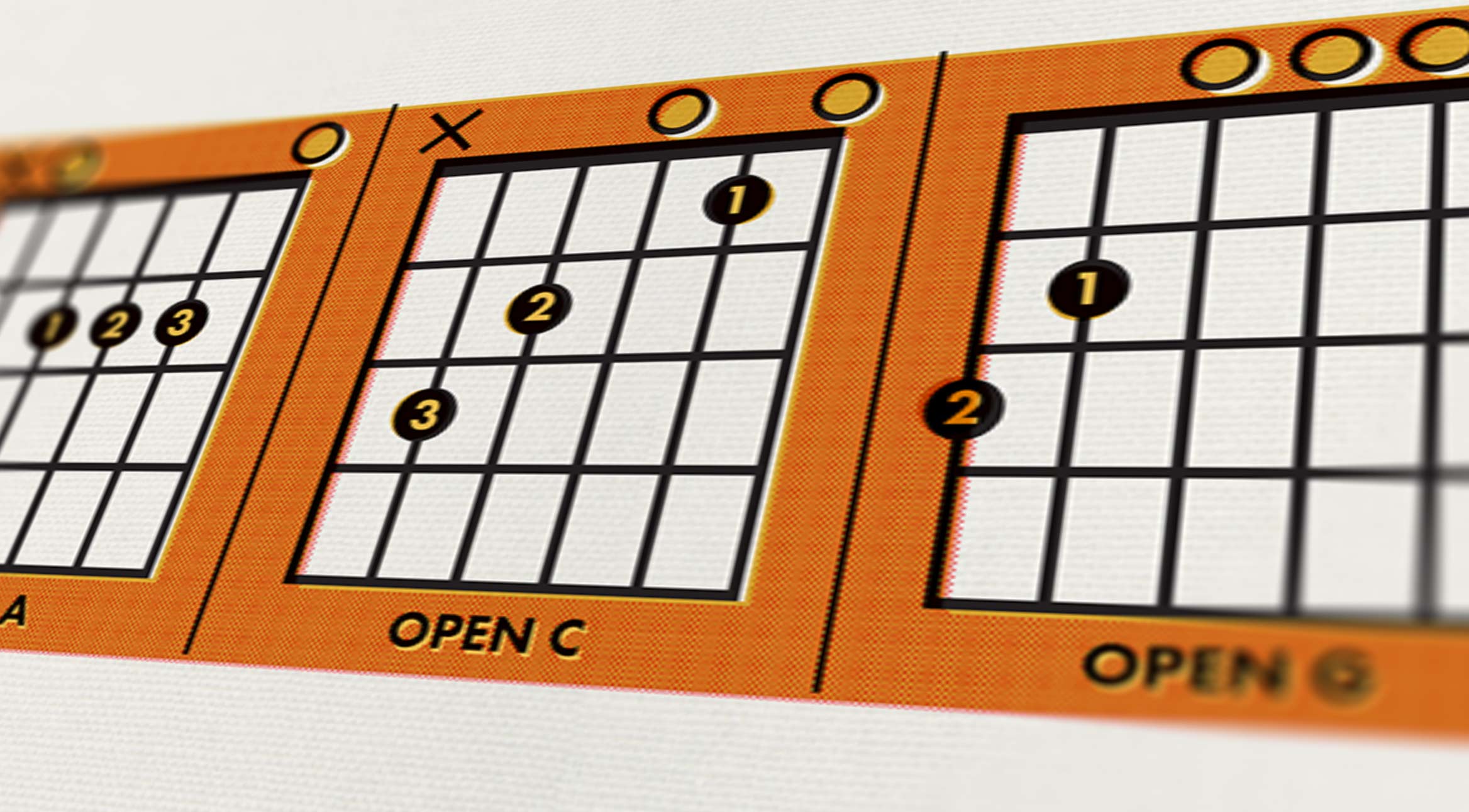
How Guitar Chords Lay Your
Musical Foundation
Written by Jeff Owens
When you’re new to guitar and you don’t really know very much about playing music yet, one of the very first things you learn is how to play simple chords.
Chords are the very foundation of guitar playing. Knowing even a few will take you a long way. Indeed, the great U.S. songwriter Harlan Howard was famous for his oft-quoted contention that country music consisted only of “three chords and the truth,” a sentiment later appropriated by U2 in a cover of “All Along the Watchtower”.
If you like guitar and you stick with, you’ll learn more than three chords. You’ll learn a whole other musical language that deals with chords. Then you’ll learn fancier chords with more elaborate names, and if you’re paying attention, you might even grow to understand why all these chords are “built” the way they are and named what they’re named. Chords are pretty simple at their most basic level—especially on guitar—although they can certainly get more complex as your ability and understanding progress.
So what is a chord, exactly?
Technically, at its simplest, a chord is a combination of three or more different notes sounded together. That’s it.
Notice the words three and different, though. Two notes sounded together is called an interval rather than a chord. In turn, a chord is further defined as a group of specific intervals. So if you hit an E and a B at the same time, that’s technically not a chord, no matter how many Black Sabbath albums you own. And if you hit three notes together but they’re all F#, that’s not really a chord either. The three notes must be three different notes at specific intervals.
Chord Theory. The notes that make up a chord can be related to the major scale of that chord's root note eg. for a D chord – the D major scale. The basic major 'triad' chords (eg. A, Bb, B, C etc.) are made up of the 1st, 3rd and 5th notes from their respective major scales.
Basic three-note chords are called triads. The notes in these chords are usually related to each other in prescribed ways having to do with scales (a whole other ballgame) and a sort of musical mathematics, but don’t let that scare you. Suffice to say for now that the three notes in a basic chord (triad) agree with each other according to a specific formula. Chords are, in fact, all about agreement—the word itself is derived from cord, a Middle English shortening of accord.
If you look at some basic open guitar chords (chords in which open strings are used), you’ll see this triad idea at work even though you’re strumming all six strings. When hitting a simple open G chord, for example, notice that it’s built using only three notes—three Gs, two Bs and a D. An open A chord consists of two As, three Es and a C#. An open C chord (Fig. 3) is nothing but two Cs, three Es and a G.
It gets more elaborate from here on out, but for right now, rest assured that you don’t need to be Eddie Van Halen or an M.I.T. graduate to play and understand basic guitar chords. (www.fender.com)
Do you like my posts? Please share my blog with your friends
to keep me motivated and making posts.
Love and Peace and Keep Rocking!
Checkout the Right Column for more TABS


No comments:
Post a Comment